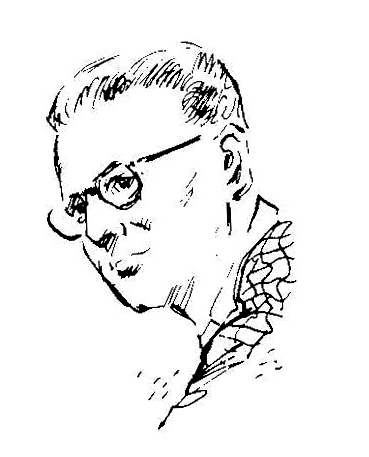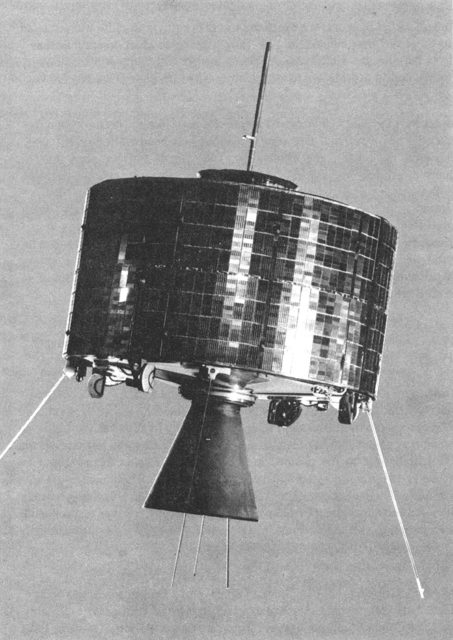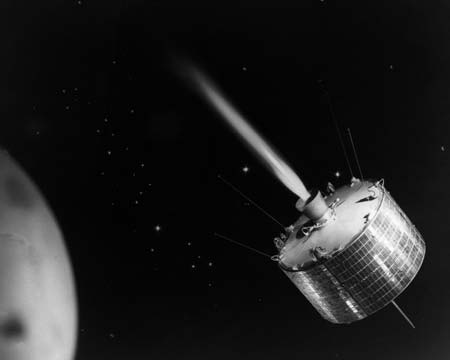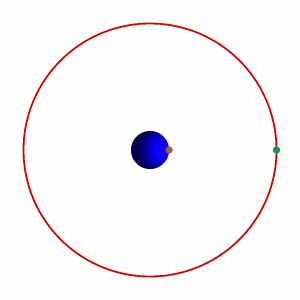Perhaps Arthur C. Clarke will be best remembered as a science fiction author, particularly for the work he did for the 1968 film 2001: A Space Odyssey. His science fiction corpus eventually earned him the title “Prophet of the Space Age”, but so did some of the ideas he is attributed for popularizing.
In a letter from February 1945, which he addressed to the editor of Wireless World, a magazine in electronics and engineering for professionals, he wrote about the idea of geostationary satellites and how they could serve as a mean of mass communications. In October that same year, Clarke published an article in the magazine entitled “Extra-Terrestrial Relays – Can Rocket Stations Give Worldwide Radio Coverage?” which further elaborated the concept.
Reportedly, he tackled this question after previously working on the development of solid-state electronics, and envisioned a trio of large, manned space stations arranged in a triangle around the planet. What he suggested was that they could provide coverage over the entire planet. Of course, modern satellites today are in much bigger numbers, they are unmanned, and often no larger than an automobile. Clarke was also not the first to talk about such ideas.


Back in 1923, Austro-Hungarian-born German physicist and engineer, Hermann Oberth has ideated satellites in his book entitled The Rocket into Interplanetary Space. Then, in 1928, Slovene rocket engineer and pioneer of cosmonautics, Herman Potočnik, further tackled the question of radio communication by means of satellites in a section of his book, The Problem of Space Travel — The Rocket Motor. Potočnik described the use of an orbiting spacecraft for the purposes of observation on the ground and further explained how the special conditions of space would boost scientific research.
Harold Rosen, an engineer at Hughes Aircraft Company was the first to invent the operational type of geosynchronous satellite; it was Syncom 2 and was launched from the Cape Canaveral on July 26, 1963. A few months later, this satellite was used for the world’s first satellite-relayed telephone call that occurred between then US President John F. Kennedy and Nigerian Primer minister Abubakar Tafawa Balewa. A year later, Syncom 3, the first geostationary communication satellite was launched and it was used to telecast the 1964 Summer Olympics in Tokyo to the United States. What Clarke talked about came true.

The influence of Clarke’s article is not fully clear as to what degree it inspired the modern telecommunication satellites, but the author is undoubtedly attributed for the popularization of the idea.
According to John R. Pierce, an American engineer who was involved in Project Echo and the Telstar projects, the science fiction writer also delivered a talk on this subject in 1954.

In an interview done shortly before his death, Clarke was asked whether he had ever presumed that some day communication satellites would become so significant. He had provided a witty answer, by saying, “I’m often asked why I didn’t try to patent the idea of communications satellites. My answer is always, ‘A patent is really a license to be sued.’”
Geostationary satellites orbit the Earth in a circular orbit above the Earth’s equator, at an altitude that enables them to follow the direction of the Earth’s rotation. In honor of Arthur C. Clarke, this orbit today is also called Clarke Orbit or the Clarke Belt.
